Description

Def Leppard Pyromania
Label: Vertigo VOG-1-3319
Format: Vinyl, LP, Album
Country: Canada
Released: 1983
Genre: Hard Rock
Tracklist
A1 Rock! Rock! (Till You Drop) 3:52
A2 Photograph 4:12
A3 Stragefright 3:46
A4 Too Late For Love 4:30
A5 Die Hard The Hunter 6:17
B1 Foolin’ 4:32
B2 Rock Of Ages 4:09
B3 Comin’ Under Fire 4:20
B4 Action! Not Words 3:52
B5 Billys Got A Gun 5:55
Photograph:
Exported By Polygram Inc.
Distributed By Polygram Distribution Inc.
Producer Robert John Lange
Joe Elliott lead vocals
Steve Clark guitars
Phil Collen guitars
Rick Savage bass guitar
Rick Allen drums
Pete Willis rhythm guitars
Additional musicians:
The Leppardettes backing vocals
John Kongos Fairlight CMI programming
Booker T. Boffin keyboards (a.k.a. Thomas Dolby)
Pyromania is the third studio album by British rock band Def Leppard, released on 20 January 1983. It featured new guitarist Phil Collen and was produced by Robert John “Mutt” Lange. The album charted at #2 on the Billboard 200 and #18 on the UK Albums Chart. It was a huge success, selling over ten million copies in the US, and thus being certified diamond by the RIAA.
Singles from Pyromania
“Photograph”
Released: February 1983
“Rock of Ages”
Released: May 1983
“Foolin'”
Released: September 1983
“Too Late for Love”
Released: November 1983
Rock of Ages:
Def Leppard: “Pyromania was selling 100,000 copies a day in the USA”
Pyromania was the album that turned Def Leppard into superstars. A multi-platinum phenomenon so huge that only Michael Jackson’s Thriller, prevented it from reaching No.1 in America
“When I watched Marc Bolan on Top Of The Pops, I just wanted to be up on that same stage, covered in glitter and wearing women’s shoes,” Elliott recalls. “I dreamed of being the singer in the biggest rock’n’roll band in the world. Pyromania made it happen.”
On a freezing night in the winter of 1978, 19-year-old Joe Elliott was walking home through Sheffield city centre after a night in the pub. He and three other members of Def Leppard – guitarists Steve Clark and Pete Willis and bassist Rick ‘Sav’ Savage – were so broke that their last drink was a single pint of bitter with four straws in it. As he came to the City Hall, Sheffield’s leading music venue, Joe pulled a piece of chalk from his pocket and wrote on the wall beside the City Hall’s front doors: ‘DEF LEPPARD WILL PLAY HERE IN 1980!’
His prophecy came true. On April 10, 1980, Def Leppard played a sold-out show at the City Hall, after their debut album On Through The Night reached No.15 in the UK chart. But within months of this triumph the young band would discover just how tough the music business really is.
In August 1980 Leppard’s appearance at the Reading Festival was met with a hail of bottles. A cover story in Sounds – written by Classic Rock’s Geoff Barton and provocatively titled ‘Has the Leppard changed its spots?’ – had led many British rock fans to believe that the band had sold out. The title of Leppard’s single, Hello America, didn’t help.
Too Late for Love:
One year later, Barton gave Leppard’s second album, High ‘N’ Dry, a rave review. But the damage had been done; in Britain the album peaked much lower than On Through The Night, at No.26.
Leppard finished touring High ‘N’ Dry by supporting Judas Priest on the European leg of the latter’s Point Of Entry tour. Sandwiched between Priest and Teutonic headbangers Accept, Leppard made little impact on the massed ranks of denim-and-leather-clad metalheads.
On December 12, in Amsterdam, the tour ended on a miserable note. The band’s passports were stolen from their tour bus, forcing Leppard to miss the last two shows in Germany. And Pete Willis, their diminutive, heavy-drinking guitarist, pulled a particularly stupid stunt – and not for the first time – by letting off a fire extinguisher in a hotel. The prank cost Willis £275. Def Leppard returned to Britain exhausted and frustrated, bloodied but unbowed. “There’s no such thing as a lack of confidence when you’re 21 years old,” Elliott says.
Def Leppard and Mutt Lange were a perfect fit. The band had thought so even before they’d heard Highway To Hell and Back In Black. They loved the late-70s new wave-era pop hits Mutt had produced: The Motors’ Dancing The Night Away, City Boy’s 5.7.0.5., the Boomtown Rats’ chart-topping post-punk anthem Rat Trap.
Leppard spent just three months in the studio with Mutt making High ‘N’ Dry, but even in a relatively short period they made significant progress. “High ‘N’ Dry was a big improvement on the first album,” Elliott says. “Songwriting, performance, sound, production, everything. And with the third album, we wanted to make the same kind of leap. We didn’t want to be making High ‘N’ Dry II. We’d gone from one to three, so we had to go from three to five, not three to four.”
Mutt Lange shared this vision. He told the band: “We can make a record that nobody’s ever made before.” Mutt listed the cutting-edge studio technology at their disposal – digital recording, new drum machines and synthesisers – and explained how these could be applied to the recording of hard rock. But he warned: “If we go for it, we’re gonna go down a lot of dead ends and come back frustrated. Even I don’t know where we’re going with this.”
As Elliott says: “Mutt needed a band that was prepared to go with him, and we needed somebody that was prepared to take the responsibility. It was perfect for Mutt. He had a band that wasn’t full of ego. We hadn’t had any previous success to fight him with. Foreigner had had triple-platinum records. You can imagine them thinking, ‘Who does this guy think he is?’ But with us he could try anything.”
Foolin:
What made Def Leppard such willing pupils was a keen appreciation of rock history. “We’d read about Queen and The Beatles using all these toys in the studio,” Elliott explains, “and we wanted to do the same thing, but within a hard rock format. There were certain records from the 70s that were much better than the stuff that was coming out in the early 80s. Boston’s debut and the first four Queen albums, they were huge productions, and that’s what we wanted – a massive sound.”
Leppard wrote most of the songs for their third album in February 1982. Some of the songs were brand new, built from a stockpile of riffs the band had worked through after the High ‘N’ Dry tour. But they also remodelled a couple of older songs that hadn’t made the cut for High ‘N’ Dry: Medicine Man was beefed up and renamed Rock Rock (Till You Drop), and a previously unfinished track, described by Joe as “a dual-guitar pop song”, was finally completed, and titled Photograph.
Aside from drummer Rick Allen, every band member contributed to the writing, as did Mutt Lange, who co-wrote all of the album’s 10 tracks. Guitarist Pete Willis wrote the riff to Rock Rock (Till You Drop). Their other guitarist, Steve Clark, a Jimmy Page fan, created the Zeppelin-styled epic Billy’s Got A Gun. Rick Savage came up with the express-train rocker Stagefright.
Elliott: “When we were piecing these songs together it was all written with vocals in mind. Guitar is a backing instrument to a voice. It sounds like an egotistical statement from a singer but it’s true. And with Pyromania the whole thing was driven by vocals.”
“Mutt was like a sergeant major,” Elliott recalls. “I remember him reaming Pete Willis for eating an apple while we were supposed to be recording. Mutt was shouting: ‘We don’t have the money or the time to be pissing about!’ We were laughing. It was like being back at school.”
It was only when Willis screwed up again that the gravity of the situation really hit home. Elliott: “Pete turned up one morning around 10am, and he was so bollocksed he was actually doing the Paul Kossoff and wearing the guitar backwards – strings inside – strumming the back of the guitar. Mutt was laughing so hard. But then he sent Pete home. I was really scared that Mutt was gonna walk off the project. And I’m afraid, truth be known, Mutt was more important than Pete was.”
Pete Willis had become a liability. And after lengthy discussions, a decision was made. “We’d made the decision 99 times before,” Elliott sighs, “and every time we’d been talked out of it, either by Pete or management.”
The band had already identified a replacement for Willis: Londoner Phil Collen, guitarist with NWOBHM-era glam-rock band Girl and a good friend of Joe’s. During the High ‘N’ Dry tour, Joe had called Phil at 2am following another drunken outburst from Willis. “I asked Phil if he could learn 18 songs in three days,” says Elliott. “But of course, in the cold light of day I rang him again and said: ‘Look, one day, but not now.’”
Collen didn’t have to wait long. Willis was summoned to a band meeting and told he was out. When he pleaded for one last chance, Joe replied: “You’ve had a hundred chances.”
It was a tough call but as Joe sees it, Pete had only himself to blame: “When Pete had a few drinks he thought he was King Kong. I mean, Steve was a drinker but Steve was a nice guy. Pete wasn’t. In the end I thought, I’m not putting my life on the line for this twat any more.”
On reflection, Elliott is keen to stress the importance of Pete Willis’s contribution to Pyromania. The guitarist co-wrote four of the album’s 10 tracks, including Photograph, the key hit single. And despite his run-ins with Mutt Lange, Willis also played the rhythm guitar parts on every track. Phil Collen joined the band for the final stages of recording, when they returned to London for overdubbing and mixing at Battery Studios. Collen played solos on five of the tracks, with Steve Clark taking the other five.
It was only when the album was being mixed that Elliott got a true sense of what Def Leppard had achieved with Pyromania. “We knew we’d done something that had never been done before,” he says. “And a lot of that wasdown to Mutt.”
The producer was a hard taskmaster whose relentless pursuit of perfection pulled the best out of each band member, none more so than the singer. “I wasn’t fucking David Coverdale,” Joe shrugs. “We went to a lot of effort to make me better than I was. It was hard work, but you got something unique. I was right on the peak of my performance, and there was no better man than Mutt to push me. Sometimes I’d be thinking, ‘Jesus, how many times have I gotta do this? I’m gonna lose it!’ What Mutt got was a great performance from someone who isn’t a great singer.”
Mutt was equally obsessive about backing vocals, using all five band members – and himself – to create stunning multi-tracked vocal harmonies in the style of Leppard’s heroes Queen. “The backing vocals on Foolin’ and Billy’s Got A Gun are just nuts!” Elliott laughs.
But the producer’s masterstroke was to bring in 80s keyboard maestro Thomas Dolby to play on the album. Mutt had employed him to brilliant effect on Foreigner’s 4: it was Dolby who played the synthesisers on the hit ballad Waiting For A Girl Like You. And he played a key role on Pyromania.
“The band and Mutt, we wanted to make a really modern rock record,” Elliott says. “We wanted an album that sounded the way Spielberg’s movies looked. And Thomas Dolby was perfect for that.”
The massed synthesiser chords Dolby added to the intro of Rock Rock (Till You Drop) transformed a straightforward kick-ass rocker into a cutting-edge stadium-rock anthem. As the opening track on the album, it was an emphatic statement.
Elsewhere, Dolby added subtle textures to Foolin’ (reminiscent of Waiting For A Girl Like You) and dramatic flourishes to Die Hard The Hunter.
The final mix of Pyromania was completed just before Christmas 1982. It had taken nine months to finish. However, at a cost of more than £1m it had to sell at least three million copies to get Def Leppard out of debt. Joe Elliott should have been a worried man. He wasn’t. “We knew we’d made a great record,” he says. “And we knew it had the potential to be huge.”
In the UK Pyromania was still selling slow. It peaked at No.18. And after a showcase gig at London’s Marquee club on February 9 the band’s British theatre tour drew disappointingly small audiences. Joe called it “The Nobody Cares Tour”.
In America, however, it was a different story. The album’s lead single, Photograph, was a huge radio hit. “Photograph blew out the door the way More Than A Feeling or Radar Love or Black Betty did,” says Elliott. “I met George Michael and he said: ‘I bought Photograph – great song!’ That’s when you know you’re crossing over.”
Leppard began touring the US in March, supporting Billy Squier on 24 dates. Squier was still a big star at the time, “a bona fide arena-rock sensation”, as one critic called him. But Def Leppard blew him off stage night after night. On April 29 Leppard began their first headlining US tour, with support from Krokus and Jon Butcher Axis. The first of these shows was a sobering experience: a 10,000-seater sports arena in Odessa, Texas was only a quarter full. But within a matter of weeks shows were selling out. “By the summer we were flying. We sold out two nights in Detroit faster than Zeppelin did!” Elliott states.
Two more singles were lifted from the album: first Rock Of Ages, then Foolin’. Both received such heavy airplay in America that the singer admits: “I swear to God I turned the radio off cos I got sick of hearing us every 20 minutes!”
During one amazing period in August, Pyromania was selling 100,000 copies a day in the US. The album climbed to No.2 on the Billboard chart – second only to Thriller. “We actually outsold Thriller for one week,” Elliott says, “but that just happened to be the week that the Flashdance soundtrack went to No.1, with us at two and Jacko at three.”
On September 17, 1983 Def Leppard arrived in San Diego, California for the Pyromania tour’s 117th and final stop on the US mainland. It turned out to be the biggest headline show of the band’s career up to then, with 55,000 fans packing the Jack Murphy Stadium to see Leppard plus support acts Mötley Crüe, Uriah Heep and Eddie Money.
That was just five years since Joe Elliott had scrawled Def Leppard’s name on the walls of Sheffield City Hall. Now 24, he was the rock’n’roll star of his dreams. As the band waited in darkness before going on stage, with The Rolling Stones’ Start Me Up booming out around the stadium, Elliott thought to himself: “Six months ago we didn’t know shit from shinola, and now we’re the biggest fucking band on the planet!”
“When I was a kid in Sheffield,” he says, “I was this geeky twat who liked music and wasn’t living in the real world. At 17 I was useless with women. They used to laugh at me if I asked them for a date. I had no confidence with women. And now, all of a sudden I didn’t need any – they were chasing me all over the place! But the truth is, that was never a priority. All I ever wanted was to be a star.”
This article originally appeared in Classic Rock #134.
Ultimate Albums: Pyromania







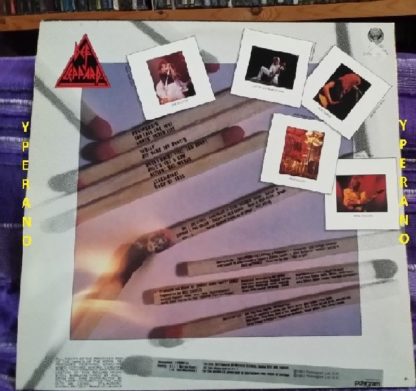





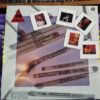
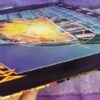
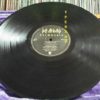








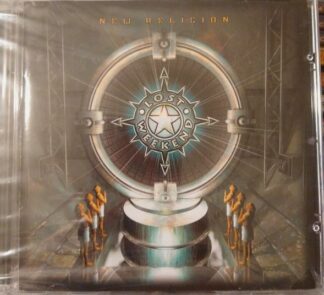

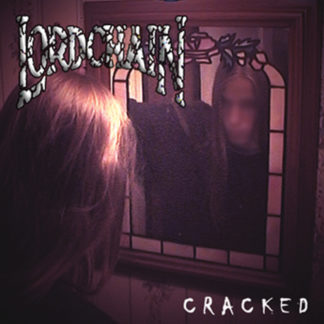
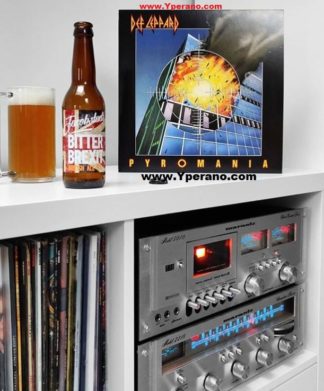


Reviews
There are no reviews yet.